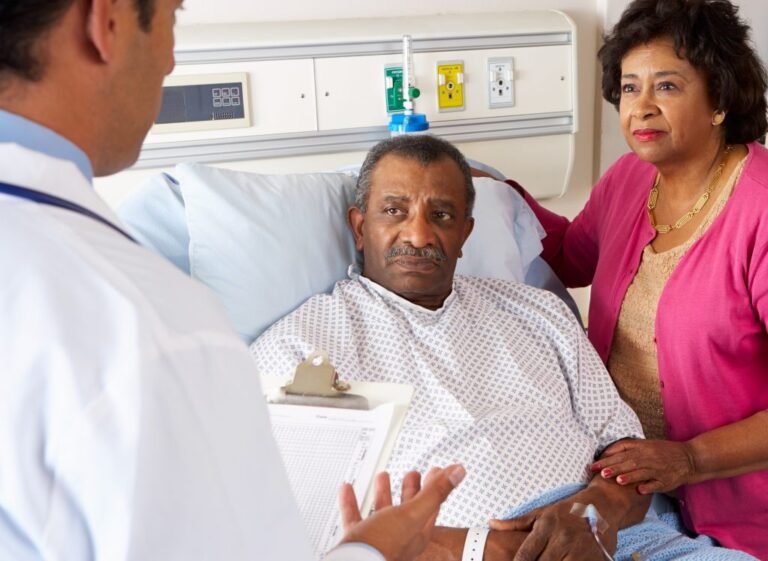THURSDAY, Oct. 12, 2023 (HealthDay News) — Men of all races and ethnicities who have prostate cancer fare equally well when access to care is identical, a new study finds.
The disparity in prostate cancer outcomes between black, Hispanic, and white men disappears when treatment and care are the same, as is the case at US Veterans Health Administration (VA) hospitals. In fact, black and Hispanic men, on average, fared better than white men, researchers report.
“Traditionally, outcomes for black and Hispanic patients, at least in health care settings with inequitable access, have been poor,” said lead researcher Kelly Rasmussenepidemiologist at the University of Utah School of Medicine.
“There are many reasons, one of which we know is that prostate cancer often occurs in black patients at a younger age,” he said. “They usually have poor survival outcomes.”
But the VA is a unique state where veterans get the same care regardless of their income, Rasmussen said. “That means these men don’t face some of the challenges that non-veterans often face when it comes to health care, such as insufficient insurance or poor access to care in the private sector,” he said.
Rasmussen believes that if you look at other medical conditions, the disparity in outcomes between white and minority patients would also disappear.
“These patient populations have many disparities in terms of access to the health care system,” he said. “We don’t really know at this point which diseases will be affected, but based on our findings, we definitely think it will.”
“When black and Hispanic men have access to equal health care, they have improved outcomes,” added Rasmussen.
For the study, Rasmussen and her colleagues collected data on nearly 13,000 men diagnosed with prostate cancer in the VA health care system from January 2006 to December 2020. These cancers developed into a deadly type of cancer called castration-resistant non-metastatic prostate cancer;
The researchers found that the median time for either the cancer to spread or to die was 6 years for black and Hispanic patients and 4 years for white and other patients.
Median unadjusted overall survival was just over 6 years among all patients, 8 years for black patients, 8 1/2 years for Hispanic patients, 5 1/2 years for white patients, and 4 1/2 years for the other patients, the researchers noted. .
The report was published online Oct. 11 in the journal JAMA Network Open.
Why black and Hispanic men fare better than white men is not clear, Rasmussen said. “Here, we’re not just seeing a few months of better survival, we’re actually seeing years.”
It’s possible that men in the VA system are diagnosed earlier, which may account for better survival, Rasmussen speculated.
A cancer specialist who was not involved in the study emphasized the importance of access to care.
“There’s no doubt that equal access is important,” he said Dr. Anthony D’Amicochief of the Division of Radiation Oncology at the Dana-Farber Cancer Institute in Boston.
“If you marginalize someone by not giving them access to health care, then the delay in diagnosis happens with cancer, with diabetes, with heart disease. So, equal access is really, really important,” he said.
D’Amico’s one argument with the study is that he doesn’t think researchers have shown that with equal access to care, black and Hispanic patients do better than white patients.
“In terms of this particular paper, they haven’t proven the point just because there’s a very important predictor missing from the model, which is Gleason scores [prostate cancer grades based on tumor cells seen in biopsy] that are predictive of outcomes, but having said that, I think it’s probably true,” he said.
More information
For more on prostate cancer, see American Cancer Society.
SOURCES: Kelli Rasmussen, MS, epidemiologist, University of Utah School of Medicine, Salt Lake City. Anthony D’Amico, MD, chief, Division of Genitourinary Radiation Oncology, Dana-Farber Cancer Institute, Boston. JAMA Network Open11 October 2023, online
Copyright © 2023 Health Day. All rights reserved.
